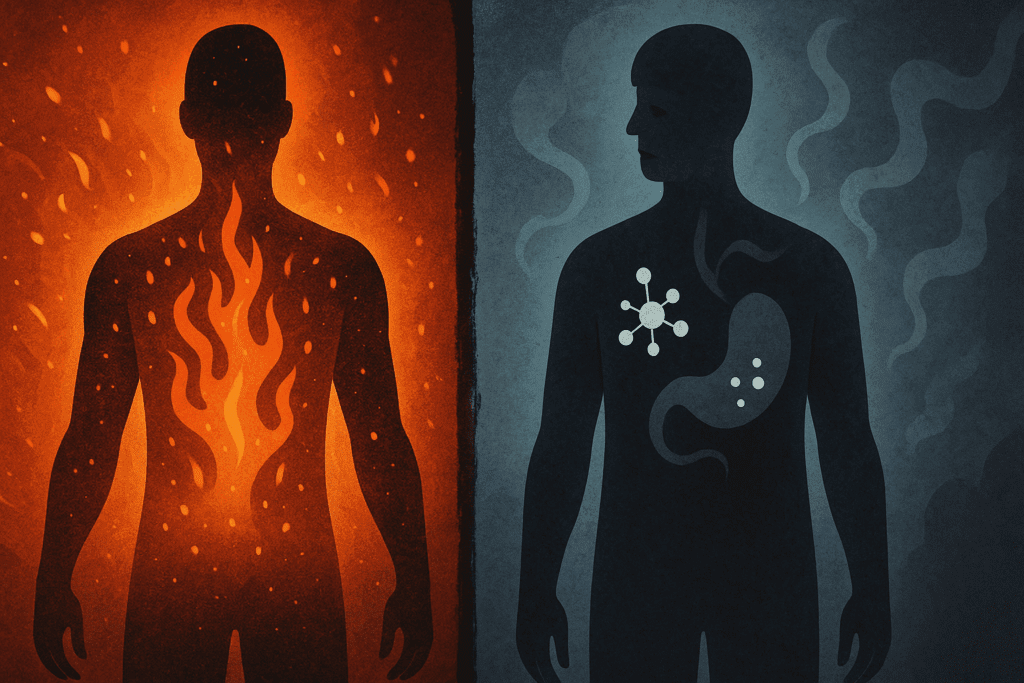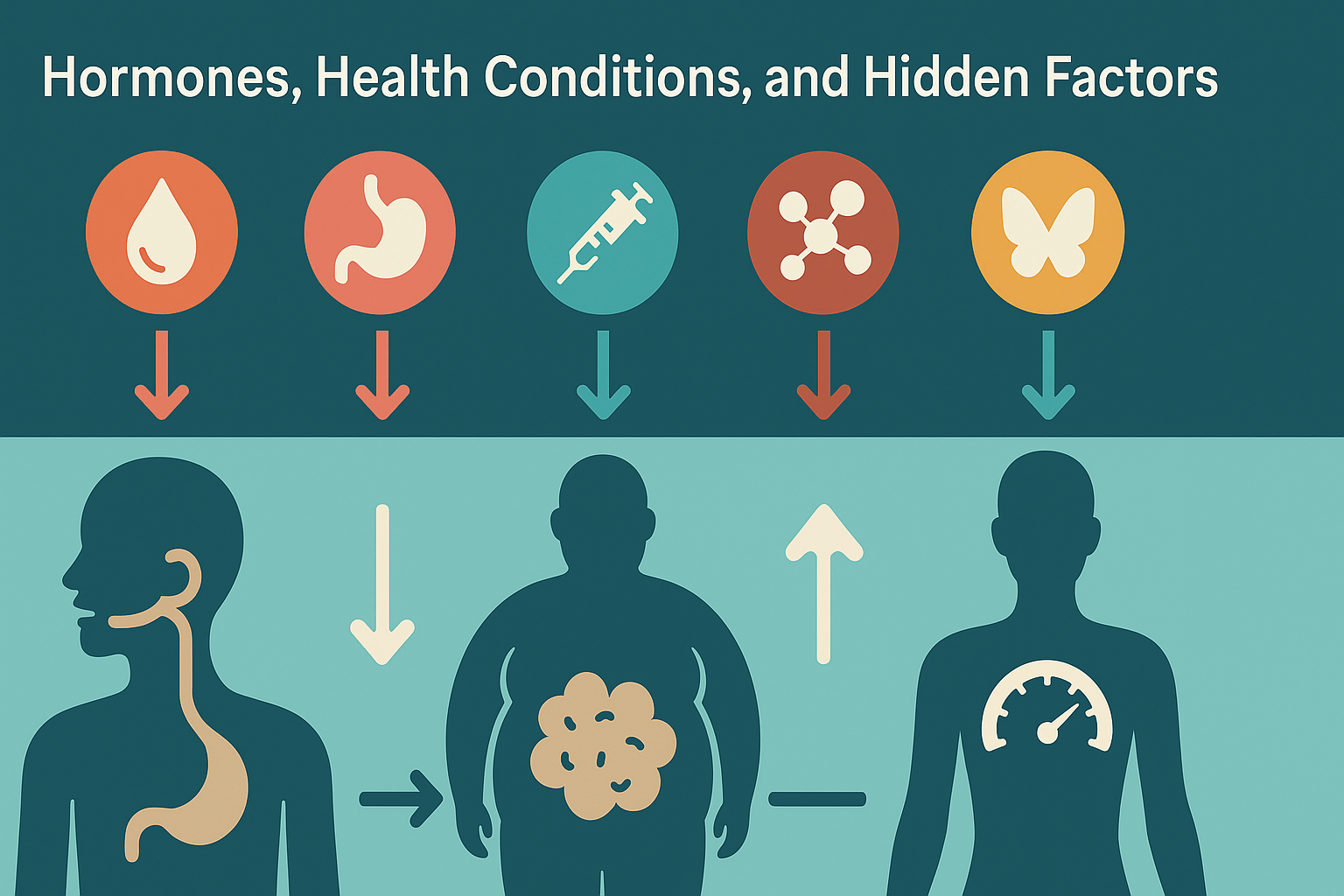Understanding the Weight Loss Plateau: When Progress Suddenly Stops
At the beginning of a weight loss journey, the initial results can be remarkably motivating. Pounds seem to shed quickly, clothes fit better, and energy levels rise. However, it’s not uncommon for this momentum to slow down, or worse, stop altogether. This frustrating phenomenon is known as a weight loss plateau—a point where progress stalls despite continued efforts in diet and exercise. Understanding why your weight loss has stalled is critical to regaining control and continuing forward on your health journey.
You may also like: Expert-Backed Weight Loss Tips for a Healthier Lifestyle: What You Need to Know for Long-Term Weight Control and Wellness
A weight plateau can occur for several scientifically recognized reasons. Initially, the body responds rapidly to a calorie deficit because it sheds excess water weight and breaks down glycogen stores. But as the body adapts, it becomes more efficient, requiring fewer calories for the same activities. This means that what worked in the beginning no longer delivers the same results. In other cases, muscle gain can offset fat loss, particularly for individuals incorporating resistance training, making scale-based measurements misleading. Furthermore, hormonal changes, sleep disruption, or underlying health conditions may also contribute to a plateau during weight loss.
The question many people ask is: how many weeks is considered a weight loss plateau? While individual variation exists, most experts define a plateau as a persistent lack of weight change for three to four weeks despite adherence to a structured eating and exercise plan. This time frame gives the body enough opportunity to make metabolic adjustments, making it a reliable window to evaluate whether true stalling has occurred or whether normal fluctuations are at play. Understanding this threshold is essential before implementing new strategies to get past a weight loss plateau.

Metabolic Adaptation: Why the Body Fights to Maintain Weight
Weight loss is not just about burning calories; it’s about overcoming the body’s deeply embedded survival mechanisms. One of the most significant biological responses to weight loss is metabolic adaptation, a process where the body reduces its energy expenditure in response to a caloric deficit. This reaction, also known as “adaptive thermogenesis,” is a key reason why losing weight and plateau phases often go hand in hand.
As body mass decreases, resting metabolic rate (RMR) naturally declines. Smaller bodies require fewer calories to function, but research shows that RMR can drop even more than expected—particularly during prolonged caloric restriction. This exaggerated metabolic slowdown is a protective evolutionary mechanism, designed to prevent starvation. Unfortunately, in modern times, it works against long-term fat loss goals.
Additionally, hormonal regulators such as leptin, ghrelin, insulin, and cortisol undergo significant shifts during weight loss. Leptin, which signals fullness, declines with fat loss, while ghrelin, the hunger hormone, rises—fueling appetite and making it harder to maintain dietary discipline. These changes are not psychological weaknesses; they are hardwired physiological responses that can contribute to weight loss stalled outcomes unless counteracted by carefully tailored interventions.
Understanding metabolic adaptation is essential for identifying the best way to get out of a weight loss stall. Approaches that simply call for increased restriction often backfire, pushing the body deeper into survival mode. Instead, strategies must support metabolic health while gently nudging the body back into fat-burning mode.

Common Lifestyle Mistakes That Trigger a Weight Plateau
While biology plays a significant role, behavioral patterns also contribute to hitting a weight loss plateau. Often, the habits that kickstart weight loss begin to deteriorate over time. This regression can be subtle—an extra snack here, a slightly larger portion there—but over the course of a few weeks, these minor changes can add up to a significant caloric surplus.
One of the most overlooked causes of a weight loss plateau is inaccurate tracking. Research consistently shows that people tend to underestimate how much they eat and overestimate how much they burn. Whether it’s using imprecise measuring tools or forgetting to log that spoonful of peanut butter, errors in tracking can quietly undermine progress. This becomes even more important as weight loss slows, since smaller caloric margins make precision more critical.
Sleep is another key factor. Chronic sleep deprivation disrupts the hormonal balance between leptin and ghrelin, increasing hunger and reducing satiety. Inadequate rest also raises cortisol levels, which promotes fat storage, particularly in the abdominal region. Combined, these effects make it more likely that a weight loss plateau will occur, even if diet and exercise appear unchanged.
Stress itself—whether physical, emotional, or psychological—can exacerbate weight plateaus. High cortisol levels influence insulin sensitivity, appetite regulation, and fat distribution. For those trying to figure out how to break a weight loss plateau, lifestyle adjustments that reduce stress and improve sleep quality may be just as important as dietary tweaks.

Nutritional Strategies to Break Through a Weight Loss Plateau
When addressing a stalled scale, it’s tempting to cut calories further. However, extreme restriction can worsen metabolic slowdown and increase the risk of muscle loss. The best way to get out of a weight loss stall nutritionally is to focus on nutrient density, macronutrient balance, and meal timing.
Protein plays a central role in restarting fat loss. Higher protein intake supports muscle preservation, increases thermogenesis, and enhances satiety. Clinical studies show that consuming at least 1.2–1.6 grams of protein per kilogram of body weight can improve body composition outcomes during energy deficits. This shift alone can help get past a weight loss plateau by optimizing metabolism and appetite regulation.
Another approach involves carbohydrate periodization, or “carb cycling.” By alternating between low and moderate carbohydrate intake on different days, individuals can potentially enhance insulin sensitivity and metabolic flexibility without triggering prolonged hormonal stress responses. This technique is especially useful for people combining strength training with fat loss goals.
Intermittent fasting may also help break a weight loss plateau, particularly for those who struggle with appetite control or mindless snacking. Time-restricted eating (e.g., 16:8 fasting windows) has shown promising results in improving insulin regulation, reducing overall caloric intake, and preserving lean mass. However, intermittent fasting is not a one-size-fits-all solution. It must be personalized and medically appropriate, particularly for individuals with underlying health conditions or disordered eating histories.

Exercise Adaptations: Rethinking Your Workout to Restart Fat Loss
Physical activity is essential for fat loss, but repeating the same workouts without variation can lead to diminishing returns. The body becomes efficient at repetitive movements, reducing the energy cost over time. When your weight loss has stalled, it’s important to revisit your exercise plan and introduce strategic changes that challenge the body in new ways.
One of the most effective techniques for overcoming a weight plateau is increasing exercise intensity. High-intensity interval training (HIIT), which alternates bursts of intense activity with periods of rest or low effort, can rev up metabolism, increase post-exercise oxygen consumption (EPOC), and burn fat more efficiently than steady-state cardio. A well-structured HIIT routine just two to three times per week can deliver measurable improvements.
Incorporating strength training is equally important. Muscle is metabolically active tissue, meaning that the more lean mass you carry, the higher your resting calorie burn. Resistance training not only combats muscle loss during weight loss but also creates microtrauma in muscle fibers that increases energy expenditure during recovery. When losing weight and plateau concerns arise, resistance training often holds the key to reigniting progress.
Recovery is also part of the equation. Overtraining without adequate rest can elevate cortisol and impair performance. Balancing high-intensity sessions with active recovery, mobility work, and adequate sleep ensures the body remains responsive to exercise stimuli. For those wondering how to break a weight loss plateau effectively, optimizing the balance between intensity, variety, and recovery is essential.

Hormones, Health Conditions, and Hidden Factors
Not every weight plateau is due to lifestyle missteps or metabolic efficiency. Sometimes, deeper physiological or medical issues are at play. Thyroid dysfunction, insulin resistance, polycystic ovary syndrome (PCOS), and other hormonal imbalances can all contribute to a weight loss stall. In such cases, pushing harder with diet and exercise may not yield results and could even cause harm without addressing the root cause.
Hypothyroidism, for instance, can significantly slow metabolism, even when caloric intake is well-managed. Subclinical hypothyroidism may not be obvious without lab work but can still impact energy levels, mood, and weight. Similarly, elevated insulin levels—often a sign of early insulin resistance—can prevent fat from being mobilized and stored energy from being burned, making it feel like your weight loss has stalled indefinitely.
Women in particular may experience plateaus due to hormonal fluctuations related to perimenopause, menopause, or the menstrual cycle. These changes can influence appetite, water retention, and fat storage patterns. Understanding that not all weight fluctuations are related to fat gain is crucial for maintaining motivation and adjusting expectations.
For individuals struggling with persistent weight plateaus despite strong adherence, seeking medical evaluation is wise. Diagnostic testing for thyroid hormones, fasting insulin, cortisol, and sex hormones can uncover imbalances that may otherwise go unnoticed. Addressing these underlying issues can be the best way to get out of a weight loss stall when traditional methods fall short.

Psychological Factors: The Mindset Behind Sustainable Progress
Breaking a weight loss plateau is as much a mental challenge as it is a physical one. The frustration of stalled results can lead to feelings of discouragement, anxiety, or self-blame. These emotional responses can erode motivation and trigger self-sabotaging behaviors, such as stress eating or skipping workouts. Recognizing and addressing the psychological component is crucial for long-term success.
One common pitfall is the all-or-nothing mindset. When progress halts, some individuals resort to extreme measures—like crash diets or excessive exercise—which may produce temporary results but often backfire in the long run. Instead, adopting a growth-oriented mindset that views plateaus as part of the journey can help individuals remain consistent and focused.
Behavioral strategies like mindfulness, journaling, or working with a health coach or therapist can reinforce positive habits and build resilience. Rather than obsessing over the scale, celebrating non-scale victories—such as improved energy, strength, sleep quality, or self-esteem—can help reframe progress in a more holistic and encouraging light.
Ultimately, will a weight loss plateau go away on its own? In some cases, yes. The body may recalibrate over time, especially if habits remain consistent. But in many cases, intentional adjustments—whether to mindset, habits, or metabolism—are necessary to catalyze further change.
How to Break a Weight Loss Stall Without Harming Your Health
The key to breaking through a weight loss stall lies not in working harder, but in working smarter. Safe and effective strategies always prioritize long-term metabolic health, muscle preservation, and psychological sustainability. One approach gaining traction among experts is the concept of a “diet break”—a temporary increase in calories (especially from carbohydrates) to support metabolic recovery and hormonal balance.
Strategic refeeding, when done under guidance, can raise leptin levels, improve thyroid function, and reduce psychological burnout. Rather than stalling further progress, such breaks can set the stage for renewed fat loss when dieting resumes. This strategy has been validated in several clinical studies, particularly among individuals following long-term restrictive diets.
Tracking progress beyond the scale is also vital. Changes in body composition, energy, and strength are often more telling than weight alone. Tools like progress photos, circumference measurements, and bioimpedance scans provide a fuller picture of what’s truly happening.
Most importantly, avoid falling into the trap of unsustainable solutions. Supplements, detoxes, or extreme regimens may promise fast results but rarely address the root causes of stalled weight loss. True success comes from consistency, patience, and a willingness to make evidence-based, individualized adjustments. If your weight loss has stalled, that doesn’t mean you’ve failed—it simply means your body is asking for a new, more nuanced approach.
Frequently Asked Questions (FAQ): Breaking Through a Weight Loss Plateau
1. Can emotional stress or mental fatigue lead to a weight loss plateau, even if my diet and workouts haven’t changed?
Yes, emotional stress and psychological fatigue can absolutely contribute to a weight loss plateau. Chronic stress elevates cortisol, a hormone that not only increases fat retention—especially around the abdomen—but also interferes with sleep quality and appetite regulation. Even if your nutrition plan and physical activity remain consistent, unmanaged emotional strain can subtly impact your body’s ability to shed weight. In fact, one of the lesser-known yet effective answers to how to break a weight loss plateau involves developing consistent stress-reduction habits like guided meditation, forest bathing, or structured journaling. These strategies help realign hormonal rhythms and support the physiological balance required for continued fat loss when weight loss has stalled.
2. How does perimenopause or hormonal aging affect the likelihood of hitting a weight plateau?
Hormonal transitions, particularly during perimenopause and menopause, play a critical role in weight regulation and often make losing weight and plateau phases more common. Fluctuations in estrogen, progesterone, and testosterone can reduce insulin sensitivity, slow metabolic rate, and shift fat distribution—especially to the abdominal area. These changes make traditional approaches less effective, meaning that the best way to get out of a weight loss stall during this stage of life may involve personalized hormone-informed strategies. These could include resistance training to rebuild lost lean mass, dietary adjustments to support insulin regulation, and sleep interventions that stabilize hormonal patterns. Understanding how hormonal aging contributes to a plateau during weight loss allows for smarter, more tailored interventions beyond calorie counting.
3. Is it possible to break a weight plateau without increasing exercise or cutting calories further?
Absolutely, and it’s often recommended to avoid further calorie cuts when the body is already metabolically adapted. One powerful alternative is called a “reverse diet,” where calories are gradually increased over several weeks to rebuild metabolic capacity and restore hormonal balance. This can be especially useful when you’re stuck and unsure how to break a weight loss stall without triggering further physiological stress. Additionally, improving nutrient timing—such as prioritizing protein post-workout or consolidating eating into an earlier window—can have positive effects on metabolic flexibility. These advanced strategies help restore fat-burning efficiency, demonstrating that you can in fact get past a weight loss plateau without aggressive restriction or overtraining.
4. What role does hydration play in preventing or overcoming a weight loss plateau?
Hydration is often underestimated in weight management, yet it’s deeply involved in metabolism, energy levels, and digestion. Dehydration can cause water retention that masks fat loss, making it appear as though your weight loss has stalled. Moreover, inadequate hydration can impact exercise performance, reduce thermogenic response, and increase perceived hunger. Drinking water before meals can modestly reduce appetite and improve satiety signals, helping you stay within your calorie goals without extra effort. If you’re figuring out how to break a weight loss plateau, start by ensuring that your water intake aligns with your activity level, body weight, and climate. Sometimes, rehydration alone can trigger a slight downward shift in the scale, revealing hidden progress.
5. Is there a specific number of weeks that defines when a weight plateau has truly occurred?
Clinically, how many weeks is considered a weight loss plateau varies based on individual metabolism and context. However, most medical experts agree that if your weight hasn’t changed for three to four weeks despite consistent effort, you’re likely experiencing a true plateau. During this time, it’s essential to assess not only body weight but also body composition, dietary habits, and stress levels. What seems like stagnation may also be a period of body recomposition, where fat loss is masked by muscle gain. Rather than rushing to cut calories, view this period as an opportunity to collect detailed data—such as waist measurements, food logs, and training feedback—that can inform how to break weight loss stall barriers with greater precision.
6. Will a weight loss plateau go away on its own if I just keep doing what I’ve been doing?
In some cases, yes—a plateau during weight loss can resolve spontaneously, especially if it results from temporary factors like hormonal shifts, stress, or mild dietary inconsistencies. However, if your weight loss has stalled for over a month, relying solely on time may not be enough. The body adapts quickly, and without changes, it often settles into homeostasis at the new weight. This is why knowing how to get past a weight loss plateau often requires proactive adjustments, such as increasing meal variety, reducing processed foods, or implementing progressive overload in workouts. While patience is important, the best way to get out of a weight loss stall typically involves strategic change rather than passive waiting.
7. How does sleep architecture influence a weight loss plateau, and can optimizing it help break the stall?
Sleep quality—not just duration—plays a vital role in fat loss, especially when weight loss has stalled. Poor sleep architecture, such as insufficient time spent in deep or REM sleep, impairs glucose metabolism, increases ghrelin, and reduces leptin, making it harder to manage hunger and cravings. For individuals dealing with a weight plateau, upgrading sleep hygiene—such as limiting blue light at night, establishing a consistent bedtime, or using cooling bedding—can make a surprising difference. Some researchers even suggest that optimizing circadian rhythm through morning light exposure and early meals can enhance weight regulation. So if you’re looking for how to break a weight loss plateau from a whole-body perspective, enhancing sleep might be an unexpected but powerful tool.
8. What are some emerging trends in nutrition science that may help break a persistent weight plateau?
One promising area involves gut microbiome modulation. Scientists are exploring how fiber diversity, fermented foods, and polyphenols can improve metabolic efficiency by supporting beneficial gut bacteria. This could provide a new path forward for those wondering how to break weight loss stall issues that don’t respond to traditional methods. Another emerging field involves “chrono-nutrition,” which studies how eating in sync with circadian rhythms affects metabolism. Some evidence suggests that front-loading calories earlier in the day may improve fat oxidation and glycemic control. These forward-looking strategies offer fresh solutions for those who feel stuck, moving the conversation beyond the outdated “calories in vs. calories out” model.
9. Can social or environmental factors influence a plateau, and how can you adjust for those?
Yes, social dynamics and environmental triggers are powerful, yet often invisible, drivers of behavior that contribute to weight plateaus. If your home or work environment encourages frequent snacking, mindless eating, or disrupted meal timing, progress can stall despite your best efforts. Even well-meaning family or friends can unintentionally sabotage goals through social pressure or food-centric gatherings. Learning how to get past a weight loss plateau may require evaluating your social ecosystem—setting boundaries, enlisting support partners, or preparing go-to responses for “food pushers.” Creating a structured environment, such as prepping meals in advance or keeping tempting foods out of sight, reinforces habits that can help you escape a prolonged plateau.
10. Are there psychological signs that signal you’re entering a plateau before the scale reflects it?
Absolutely. Subtle mental cues often precede physical signs of a weight plateau. For instance, increased frustration despite following your plan, a sudden drop in motivation, or obsessing over daily weigh-ins can indicate your body is adapting and your mind is resisting the stall. These moments signal it’s time to recalibrate—not just behaviorally but also emotionally. Learning how to break a weight loss plateau is as much about self-awareness as it is about nutrition or exercise. By identifying these psychological signals early, you can intervene with proactive changes—like shifting focus to performance goals, practicing gratitude journaling, or redefining success metrics—that create momentum before the physical stall deepens.
Final Thoughts: Getting Past a Weight Loss Plateau with Science, Strategy, and Self-Compassion
Reaching a weight plateau can feel like a betrayal of all your hard work, but it’s important to recognize that it’s a normal part of the weight loss process—not a permanent dead end. Understanding the science behind metabolic adaptation, hormonal regulation, and behavioral influences allows you to make informed decisions that support sustainable results. When weight loss has stalled, it’s not a sign to give up, but rather a cue to reevaluate, refine, and recommit.
Whether you’re trying to figure out how to get past a weight loss plateau or exploring the best way to get out of a weight loss stall, the answer lies in a personalized, health-centered approach. Combining medical insights with expert-recommended strategies—like increasing protein, adjusting exercise intensity, improving sleep, managing stress, or simply taking a strategic diet break—can reignite progress without compromising health.
Most importantly, practice patience and self-compassion. Plateaus are not failures; they are opportunities for growth, resilience, and recalibration. And while you may wonder, “Will a weight loss plateau go away on its own?”—sometimes it might, but the most powerful results come when you take action with intention. By embracing the plateau as part of the process, not the end of the road, you position yourself for deeper transformation—one that honors both your physical and emotional well-being.
Further Reading:
How To Break a Weight Loss Plateau


